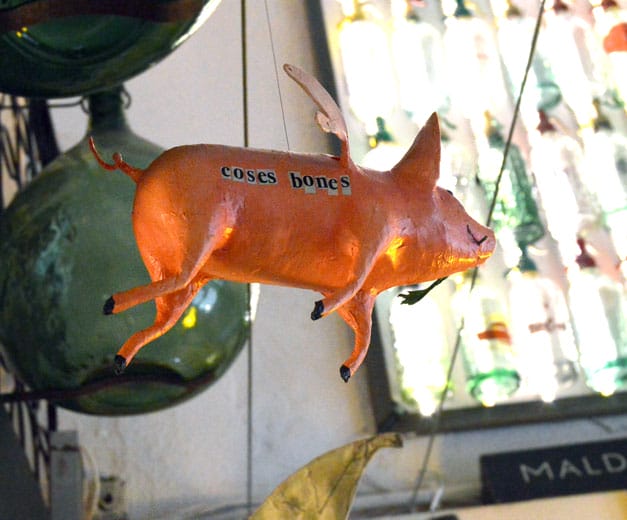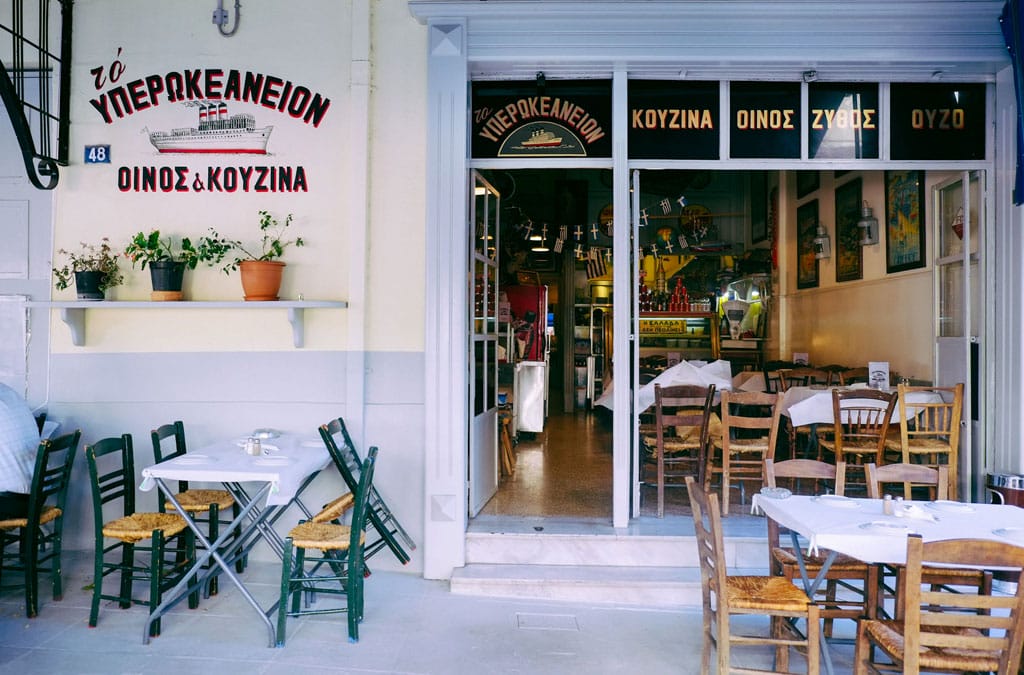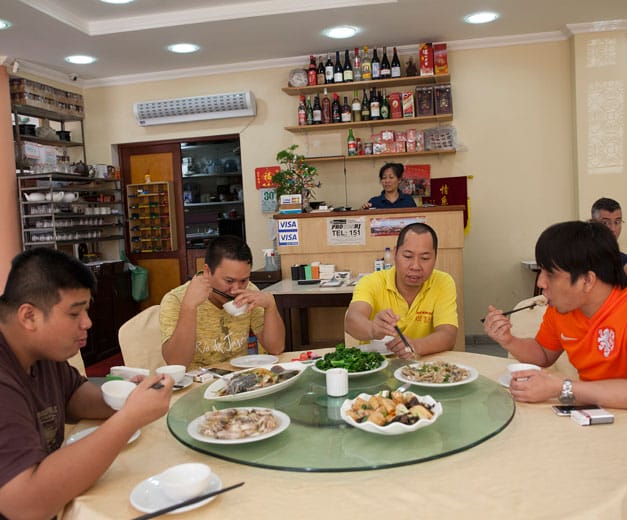Update: This spot is sadly no longer open.
There’s pork, and then there’s pork – by which we mean pastured Iberian pork from Extremadura. These native black pigs roam freely on as much as ten hectares each of dehesa, through grass and brush and under oak trees, feeding on acorns and other forage. The meat is extraordinary, tender and deeply flavorful, used to make some of the world’s best ham and among the prized ingredients at Bar Ángel in El Born.
Santi Hoyos, owner of the modest and brightly lit eatery, is an expert in the ingredients and products he uses at the bar. He knows the provenance and defining qualities of every loaf of bread, egg, fish or handful of peas that passes through the doors and has chosen each of these for those very reasons. When he was a partner at the bar Mudanzas, also in El Born, he would spend six months a year traveling around Spain with a notebook under his arm, researching and tasting products in all the different regions. At Bar Ángel, he has culled his discoveries into a short, simple menu that relies not on the creativity of the chef nor on creative twists on traditional tapas, but on the qualities of the raw materials themselves. The food he serves is exactingly prepared – mostly grilled, never fried – so that the ingredients can speak for themselves, without distractions or obfuscations.
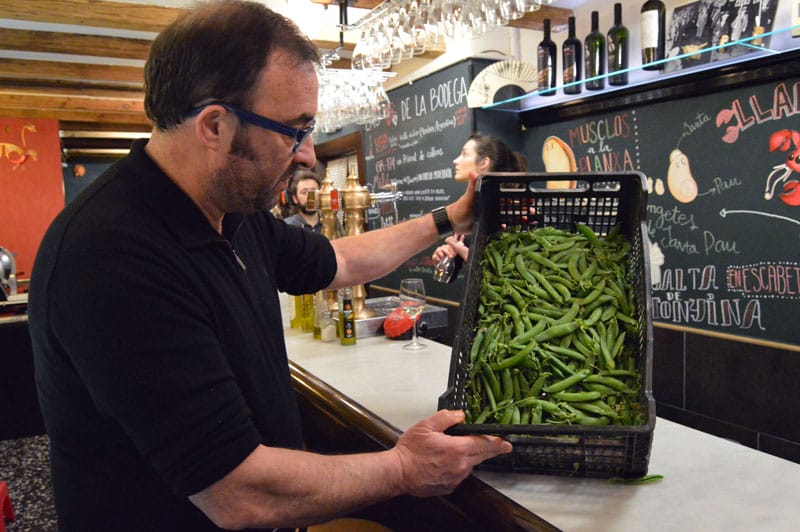
This care is perhaps most evident in the seafood and meat dishes. All the pork on the menu – cuts such as papada, or jowl, pancetta, or bacon, and presa, or shoulder blade – is pure Iberian pork from the renowned small producer Maldonado, which raises the animals in the Sierra de San Pedro mountains in Albuquerque, Extremadura. The tuna – Hoyos offers the galta, cheek, and morrillo, neck – is sustainably fished and comes from the Catalan company Balfegó. Also on offer: expressive wines from small Catalan makers, wonderful Italian cheeses, such as the Tomino that came with a subtle zucchini carpaccio anointed with an especially aromatic truffle oil, Galician potatoes and preserved sardines and fresh, local mackerel marinated Barceloneta-style with peppers and paprika.
The last time we were at Bar Ángel we came across several suppliers arriving with fresh fish and a box of just-harvested Gantxo peas, a once-endangered heirloom variety that is being cultivated once again in Catalonia. To ensure that the legumes would still be at their peak sweetness, Hoyos planned to cook them that same night. “The clients tonight are going to cry – of happiness! – with these peas,” he said, and proudly offered us a taste of them raw, straight from the delivery crate.
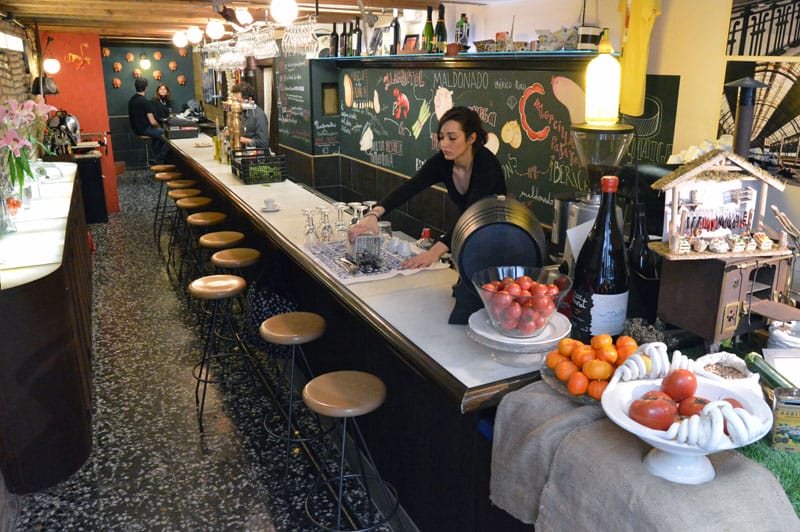
To maximize everyone’s enjoyment of all this great produce, Bar Ángel offers a cozy, laid-back atmosphere. Diners can sit at a handful of tables to kibitz over their plates or along the long bar to get closer to the action going on in the microscopic kitchen.
Hoyos told us that he started this place for the locals, for those in the neighborhood who loved eating the traditional food of the region but were sick of badly cooked cheap tapas made from poor-quality ingredients. It’s the kind of place he wanted to hang out in. And it’s a tribute to the port area, which includes El Born, La Ribera and Barceloneta. One of the desserts Bar Ángel serves, in fact, is a nod to neighborhood tradition: an exquisite mille-feuille filled with caramelized cream made by local pastisseria Vilamada. Served at area bars and restaurants, the dish’s shatteringly crisp leaf of delicate pastry gives way to a lush filling. It goes perfectly with a little glass of sweet sherry.
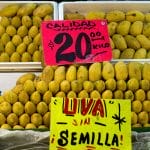 March 26, 2013 Spring (Food) Break 2013: Mexico City
March 26, 2013 Spring (Food) Break 2013: Mexico City
Editor’s note: This is the second installment of “Spring (Food) Break 2013,” our […] Posted in Mexico City July 31, 2018 Yperokeanio
July 31, 2018 Yperokeanio
The first and most vivid impression one has of Piraeus is its port: bustling, ugly and […] Posted in Athens August 17, 2015 Primeira Pá
August 17, 2015 Primeira Pá
For a country of Brazil’s size (pop. 190 million), the number of foreigners in the […] Posted in Rio
Published on March 20, 2014
Related stories
March 26, 2013
Mexico City | By Lesley Tellez
Mexico CityEditor’s note: This is the second installment of “Spring (Food) Break 2013,” our weeklong celebration of spring’s culinary bounty. This guest post is by Lesley Téllez, a freelance writer and the author of the blog The Mija Chronicles, who recently moved to New York after four years in Mexico City. The first time it happened…
July 31, 2018
AthensThe first and most vivid impression one has of Piraeus is its port: bustling, ugly and uninviting. Just a place you have to endure in order to get to your destination, usually a beautifully serene Greek island. Piraeus, however, is definitely an exciting place for anyone looking for a culinary adventure, as it is a…
August 17, 2015
RioFor a country of Brazil’s size (pop. 190 million), the number of foreigners in the country is pretty miniscule. Less than 1 percent of the country’s residents are foreign-born; the top countries of origin for those foreigners are the U.S., Japan and Paraguay. (By comparison, about 13 percent of the U.S. population of 319 million…







































